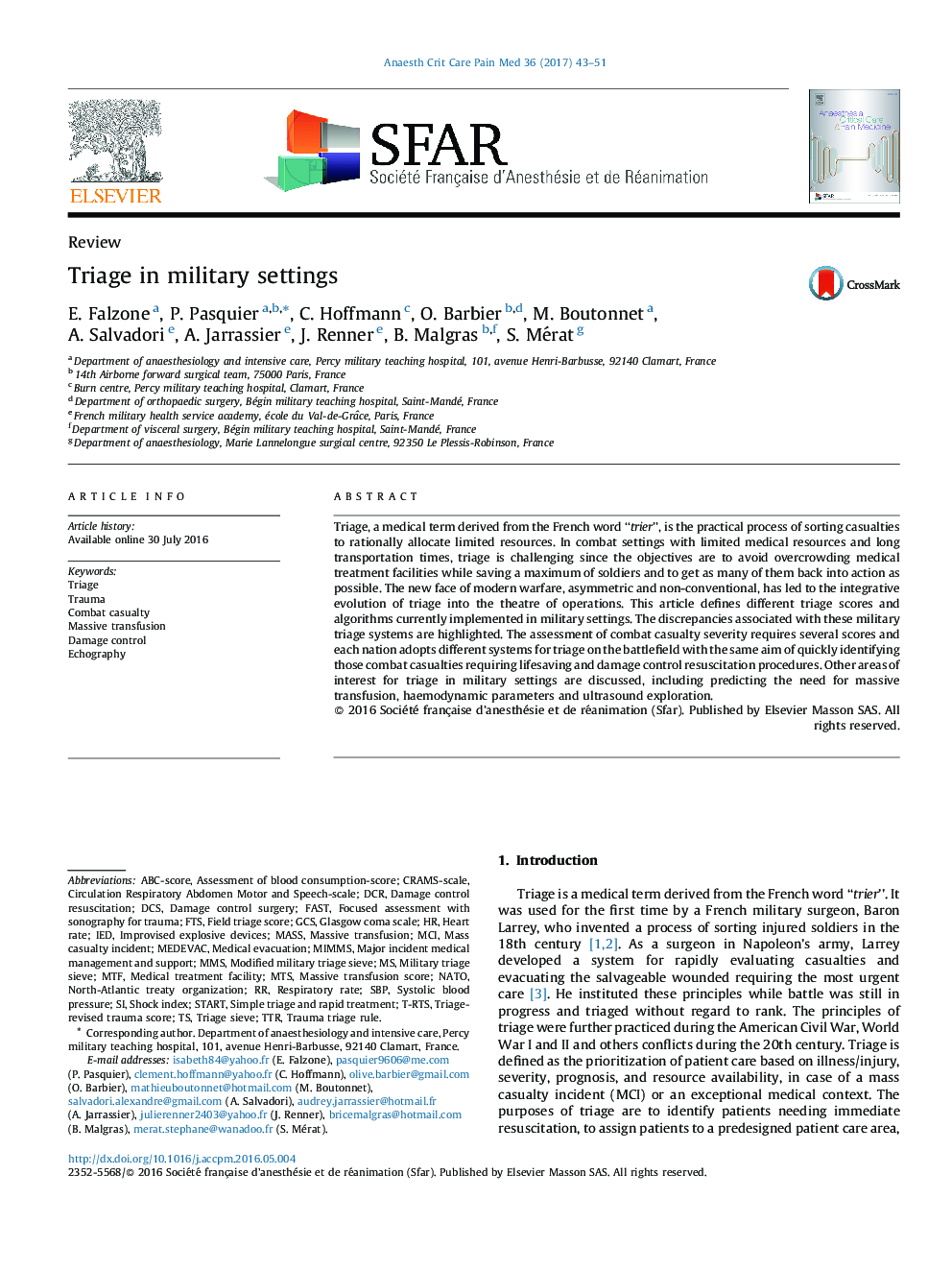| Article ID | Journal | Published Year | Pages | File Type |
|---|---|---|---|---|
| 8609606 | Anaesthesia Critical Care & Pain Medicine | 2017 | 9 Pages |
Abstract
Triage, a medical term derived from the French word “trier”, is the practical process of sorting casualties to rationally allocate limited resources. In combat settings with limited medical resources and long transportation times, triage is challenging since the objectives are to avoid overcrowding medical treatment facilities while saving a maximum of soldiers and to get as many of them back into action as possible. The new face of modern warfare, asymmetric and non-conventional, has led to the integrative evolution of triage into the theatre of operations. This article defines different triage scores and algorithms currently implemented in military settings. The discrepancies associated with these military triage systems are highlighted. The assessment of combat casualty severity requires several scores and each nation adopts different systems for triage on the battlefield with the same aim of quickly identifying those combat casualties requiring lifesaving and damage control resuscitation procedures. Other areas of interest for triage in military settings are discussed, including predicting the need for massive transfusion, haemodynamic parameters and ultrasound exploration.
Keywords
IEDSBPDCRMtFMEDEVACMTSFTSDCsGCsMMSTTRDamage control resuscitationfocused assessment with sonography for traumaMassive transfusionEchographyMedical evacuationTraumaTriageCombat casualtyDamage control surgeryMassmass casualty incidentImprovised explosive devicesFASTShock indexstartHeart ratesystolic blood pressureGlasgow coma scaleNATOrespiratory rateMCIDamage control
Related Topics
Health Sciences
Medicine and Dentistry
Anesthesiology and Pain Medicine
Authors
E. Falzone, P. Pasquier, C. Hoffmann, O. Barbier, M. Boutonnet, A. Salvadori, A. Jarrassier, J. Renner, B. Malgras, S. Mérat,
